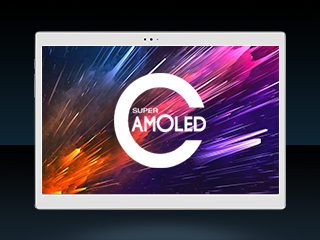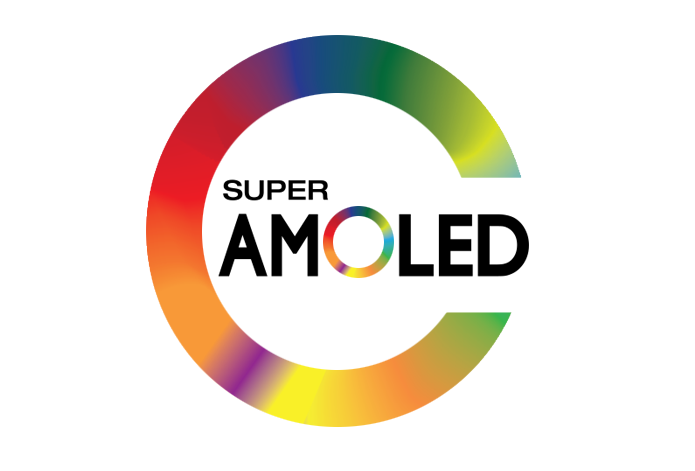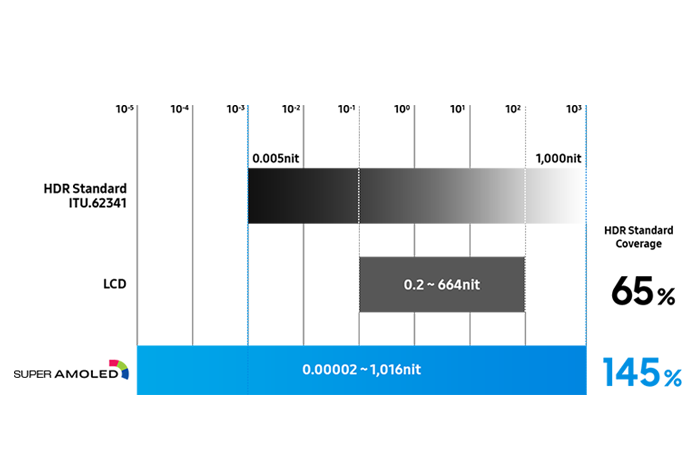Home Page › Forums › General Discussion › What Is Super-AMOLED (S-AMOLED)?
- This topic has 0 replies, 1 voice, and was last updated 2018-08-30 15:38 by
JIA YIN YIN.
by Tim Fisher
Updated March 27, 2018
26
S-AMOLED (super-active-matrix organic light-emitting diode) is a marketing term that refers to a display technology used in a variety of electronic devices. The “super” in its name distinguishes it from its older, less advanced versions (OLED and AMOLED).
A Quick Primer on OLED and AMOLED
Displays using organic light-emitting diodes (OLED) incorporate organic materials that light up when in contact with electricity. The active-matrix aspect of AMOLED sets it apart from OLED. AMOLED, then, is a kind of screen technology that includes not only a way to display light but also a method to detect touch (the “active-matrix” part). While it’s true that this method is a part of AMOLED displays as well, super-AMOLEDs are slightly different.
Here’s a quick summary of some pros and cons of AMOLED displays.

Pros:
Wide viewing angles
Support for a large range of color
Great display of black
Long battery life if using darker colors
Cons:
Oversaturated images
Shortened battery life when displaying vibrant colors
AMOLED displays are known for being able to render a deep black color when needed, a huge plus on any display and something you’ll notice right away when comparing with your standard IPS (in-plane switching) LCD (liquid crystal display). The benefit is obvious when watching a movie or viewing a picture that’s supposed to contain “true” black.

AMOLED technology includes a layer behind the OLED panel that gives light to each pixel instead of using a backlight as LCD displays do. Because each pixel can be colored on an as-needed basis, pixels can be dimmed or turned off to make a true black instead of the pixels being blocked from receiving light (as with LCD).
This also means that AMOLED screens are great for displaying a huge range of color; the contrast against whites is infinite (because blacks are absolute black). On the other hand, this amazing ability makes it easier for images to be too vibrant or oversaturated.

Super-AMOLED vs. AMOLED
AMOLED is similar to Super-AMOLED in not only name but also in function. In reality, Super-AMOLED is identical to AMOLED in all ways but one, but it’s that one way that makes all the difference.
The two technologies are the same in that devices using them can incorporate light and touch sensors so that the screen can be read and manipulated. The layer that detects touch (called the digitizer or capacitive touchscreen layer), however, is embedded directly into the screen in Super-AMOLED displays, while it’s an entirely separate layer on top of the screen in AMOLED displays.

This might not seem like a major difference, but Super-AMOLED displays carry many benefits over AMOLED displays because of the way these layers are designed:
The device can be thinner because the technologies for display and touch are on the same layer.
Higher contrast, plus the lack of an air gap between the digitizer and the actual screen, yield a crisper, more vivid display.
Less power needs to be supplied to a Super-AMOLED screen because it doesn’t generate as much heat as older screen technologies. This is due, in part, to the fact that pixels are actually turned off and therefore not emitting light/using power when displaying black.
The screen is more sensitive to touch.
Light reflection is reduced because there aren’t as many layers, which makes reading outdoors in bright light easier.
A higher refresh rate helps speed up the response time.
Manufacturing the technology behind Super-AMOLED displays is more expensive, however. Like most technology, this is likely to change as more manufacturers incorporate AMOLED into their TVs, smartphones, and other devices.
Here are some other disadvantages of AMOLED technology:
Organic materials eventually die, so AMOLED displays degrade faster than LED and LCD. Even worse, the materials used to create the individual colors have varying life spans, causing a noticeable difference in overall uniformity as the colors fade (e.g., blue OLED films don’t last as long as red or green).
Screen burn-in is a risk with AMOLED because of the non-uniform use of pixels. This effect is compounded as blue colors die out and leave red and green colors to take up the slack, leaving an imprint over time. That said, this issue doesn’t affect displays with high numbers of pixels per inch.
Types of Super-AMOLED Displays
Some manufacturers have additional terms for Super-AMOLED displays equipped with specific features in their devices.
For example, HD Super-AMOLED is Samsung’s description of a Super-AMOLED display with a high-definition resolution of 1280×720 or greater. Another is Motorola’s Super-AMOLED Advanced, which refers to displays that are brighter and of a higher resolution than Super-AMOLED screens. These displays use a technology called PenTile to sharpen the pixels. Others include Super-AMOLED Plus, HD Super-AMOLED Plus, Full HD Super-AMOLED, and Quad HD Super-AMOLED.
-
iPlay 60 pro Quickstepp app
2025-04-01 CZa_2369
-
using cast on the iplay 60s
2025-03-24 Anjan60
-
iplay60 mini turbo
2025-03-21 LuiguiTachVe
-
“fft” app preinstalled on iP
2025-03-22 jtkehler
-
i405T needs audio output driver, my touc
2025-03-21 me_wenimdedd
